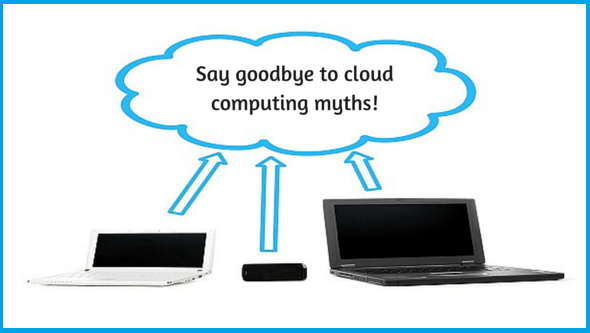
While still considered a relatively new innovation, cloud storage has quickly established itself as a must-have backup and disaster recovery solution to protect businesses against data loss. Entrusting sensitive information to a third party can be a big step for business owners who are concerned about cost, backup reliability and security. Let’s break down some of the most common cloud computing myths to prove that cloud storage is one of the best ways to store your business’ information.
Myth No. 1 – Storing data on-site will be more secure than using the cloud
Most people assume that hosting anything on-site, where it is controlled by a company’s own personnel, is automatically a safer, more secure solution. After all, we’ve all heard of the cloud being hacked, resulting in photos or other information being leaked. However, the reality is that unless you have a very technically savvy senior security engineer and expert on staff, your data is probably much more secure in the cloud. Cloud providers’ entire business is to know every detail about securing your data, whereas an in-house IT staffer most likely has only a broad understanding of top-level solutions. While on-site storage is still important, using a cloud provider for redundancy and backup is your best path to ultimate data security.
Myth No. 2 – There’s no transparency with regard to what third-party providers are doing with your data
You might think that once you start outsourcing to an external vendor, your visibility will start to plummet. Not the case! You can absolutely find providers who offer audit logs so you can see who is accessing your data, when they are accessing it and what they are doing with it. Certain providers will even offer background checks on employees with access to extremely sensitive data.
Myth No. 3 – Once data is in the cloud, it’s there to stay and cannot be taken back
Many IT decision-makers are concerned that if they move to a public cloud, such as Rackspace or Google, migrating their data back out will be a complicated process, if it’s even possible at all. While this used to be a concern, big-name storage providers have since deployed solutions to ease data movement into and out of the cloud (i.e. Amazon’s “Snowball” appliance). However, before signing up with a provider, it is always a good decision to verify recovery processes and find out how long it will take to get data back in the event of a loss or disruption.
Choosing the right cloud provider is a critical decision for businesses to make, so it is important to be educated about the process. For more information about cloud computing, including types of solutions, benefits and cost, check out our e-book!
The purpose of this blog is to answer the questions you ask! Please check out more information around cloud computing, or feel free to contact us to discuss our managed and cloud services!




